The ketogenic diet is a diet like no other. It combines the power of calorie restriction with the unique benefits of nutritional ketosis to provide people with an effective way to lose weight and improve overall health.
As I look deeper into the keto diet, however, there is a huge discrepancy between what people think they need to do versus what the science says is best for most people. Some common myths like “carbs and insulin are the only reason why we get fat”, “you will lose weight as long as you are in ketosis”, and “calories don’t matter” are perpetuated on a daily basis by low carb diet enthusiasts, but these falsehoods only cause more confusion and frustration — especially if you are new to this way of eating.
This is why we decided to put together an article with the ten most important tips for ketogenic diet success. With each tip, we hope to clear up common misconceptions and give you practical strategies so you can finally get the results you want.
1. Know What You Should Focus On
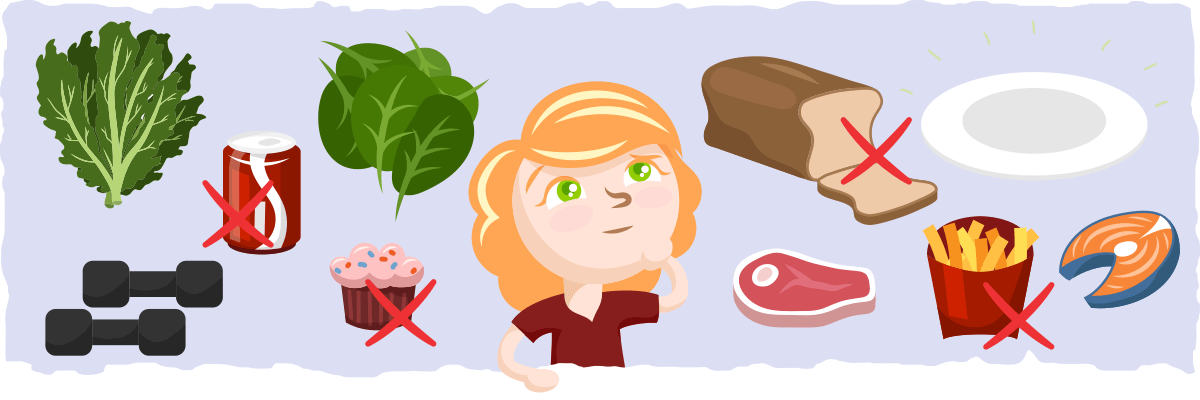
Do calories matter on keto? What exactly should you eat? Why does the keto diet work so well?
Depending on who you ask, you may get a completely different answer. Even some research papers will propose one hypothesis while other data clearly suggests that it’s not true (like the carbohydrate-insulin hypothesis for obesity).
With all of the contradicting beliefs in the keto diet world, it is hard to know what is actually true — and without the truth how are you supposed to know what to do if things don’t go as you initially hoped?
Do you focus on limiting carbs more? What about exercising? Should you intermittent fast?
After digging through the research, It becomes clear that people lose weight on keto because of one thing — the fact that keto dieters tend to eat much fewer calories than they did before without noticing.
It doesn’t matter how much you restrict your carbs and how many grams of fat you eat. The key to burning off your own fat is being in a calorie deficit.
If you can find a diet that allows you to eat fewer calories than before without battling against cravings and hunger (like keto dieting does for most people), then you’ve found one of the most sustainable ways to lose weight.
The best way to create a diet like this is by following these two principles:
- Eating mostly protein-dense and fiber-rich foods because of how satiating they are.
- Eliminating all calorically-dense processed foods from your diet because of how easy it is to binge on them.
The primary reason why the keto diet is so effective for weight loss is that it follows these two principles better than almost every other popular diet. As a result, people who are following the keto diet feel more satisfied than ever before on fewer calories and start burning off excess body fat.
To learn more about how to lose weight on keto, check out this article.
To sum up this tip more succinctly: Eating fewer calories than your body needs to maintain its weight (not carb restriction) is the key to weight loss. If you are not getting results you want, it’s best to adjust your lifestyle and way of eating that allows you to be in a calorie deficit. One of the best ways to do this is by eating keto foods, which you will learn about in tip #2.
2. Only Consume Keto Foods and Ingredients
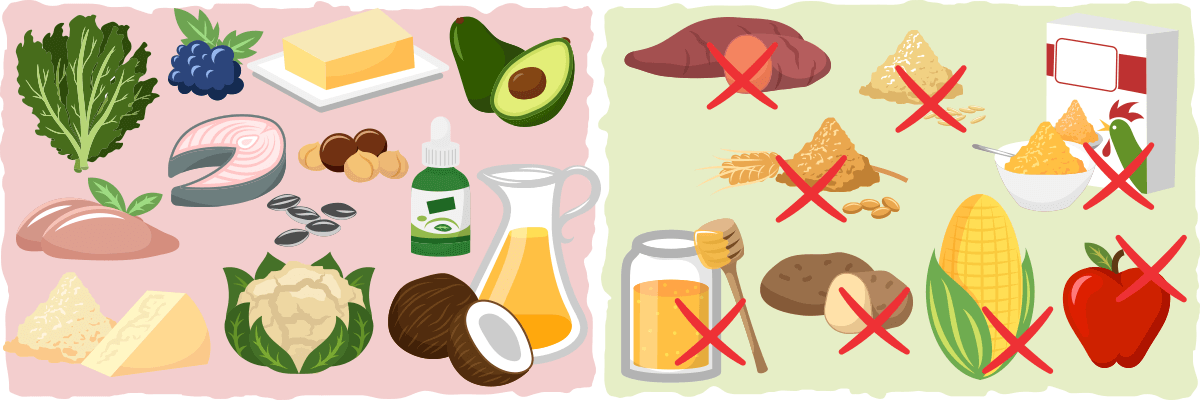
Keto foods are foods and ingredients that are very low in carbs. What “very low in carbs” means exactly will depend on your daily carb limit. For example, we recommend keeping total carbs below 35g and net carbs below 25g (ideally, below 20g) so that you can reap the benefits of eating highly satiating foods and ketosis. (To figure out your net carb consumption, simply subtract total fiber intake from total carbs.)
To have such a small amount of carbs, you must be vigilant about your food choices. You may find that many of your favorite foods will put you near your carbohydrate limit for the day with just one serving. Even healthier foods like fruits and vegetables are packed with sugar and carbs, but don’t get discouraged — there is plenty of delicious food you can eat on the ketogenic diet.
For example, you can have a Bacon Breakfast Bagel for breakfast, a Thai BBQ Pork Salad for lunch, and a Keto BBQ Chicken Pizza for dinner. All of them are delicious and relatively low in carbs.
Check out this list for some more ideas of what you should and should not eat on the ketogenic diet:
Do Eat
- Meats – fish, beef, lamb, poultry, eggs, etc.
- Low carb vegetables – spinach, kale, broccoli, cauliflower, and other keto-friendly vegetables >
- High fat dairy – hard cheeses, high fat cream, butter, etc.
- Nuts and seeds – macadamias, walnuts, sunflower seeds, etc.
- Avocado and berries – raspberries, blackberries, and other low glycemic impact berries
- Sweeteners – stevia, erythritol, monk fruit, and other low-carb sweeteners >
- Other fats – coconut oil, high-fat salad dressing, saturated fats, etc.
Do Not Eat
- Tubers – potato, yams, etc.
- Fruit – apples, bananas, oranges, etc.
- Sugar – honey, agave, maple syrup, etc.
- Grains – wheat, corn, rice, cereal, etc.
To see more specific advice on what (and what not) to eat, click here.
For more ideas on what you can eat, check out our recipe page and our low carb cheat sheet.
You can also make plenty of keto-friendly baked goods and fried foods with keto flour like almond flour, coconut flour, and the other keto-friendly baking ingredients that you will find in this article.
However, eating these foods and making these keto recipes will not guarantee you the results you want. Once again, the key to weight loss is eating fewer calories than your body needs to maintain its weight. Even if your diet consists of absolutely no carbs, you can still gain weight. This is why it is so helpful to be aware of how many calories and grams of carbs, fat, and protein you are consuming on a daily basis.
3. Track Your Macros
The current research data suggests that we tend to underestimate how many calories we eat. At times, the difference between estimated calorie intake and actual calorie intake is so profound that you may think you are eating much less than before but you are still gaining weight.
In fact, many of us will have plenty of low-calorie days where we do lose a bit of weight, but then our subconscious weight-regulating mechanisms will kick in to motivate us to eat more the following day. This will cause you to either gain more weight or hit a weight loss plateau that you just can’t seem to break.
The worst part is that we are typically never aware that this is happening, and we start to blame ourselves or the diet when the truth is that we just need to take an objective look at how much we are eating.
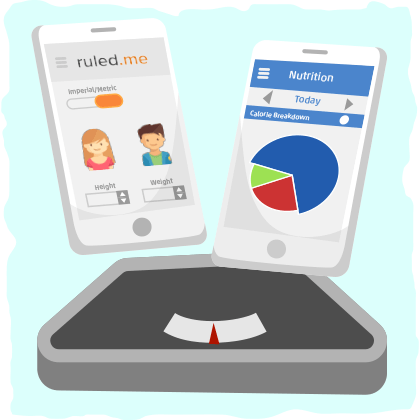
One of the best ways to track what you are eating is by using a calorie tracking app and a scale. By using both, you will be much more accurate in knowing what you are consuming and have all the info you need to start losing weight consistently again.
When it comes to tracking calories, I prefer to use MyFitnessPal (for general macro tracking) and Cronometer (for more specific macro and micronutrient tracking). If you’d like to get started with tracking your calories using these apps, check out our guide on the topic — It has everything you need to know so that you can set up MyFitnessPal and Cronometer for your specific macronutrient needs.
To find out what your calorie and macronutrient needs are, plug your info into our keto calculator. It will tell you exactly how many calories and grams of fat, protein, and carbs you need to eat on a daily basis to get the results you want.
Another way to increase the accuracy of your calorie tracking is by using a food scale. Most people measure the amount of food they eat by guesstimating – which typically causes you to eat more calories than you intend.
There are certain things I look for when buying a scale, and most importantly include:
- Having a conversion button. Most calorie tracking apps and websites use a mixture of units. Having a conversion button on your scale can make it much easier for you to measure your food. A gram to ounce and ounce to gram conversion button is the one that I most commonly use.
- Automatic Shutoff. Make sure you research the scale you are buying. If the scales have an automatic shutoff, it can be troublesome to properly measure your food. Try to find scales that allow you to program the automatic shutoff or require you to manually turn it off.
- Tare Function. Being able to place bowls, plates, and utensils on your scale makes it a lot easier to weight things out. Make sure that your scale has a tare option, which will allow you to place an item on the scale and revert back to 0.
- Removable Plate. Cleaning scales can be a huge hassle when dealing with messy foods. Double check that the scale you are buying has a removable plate for easy cleaning.
Once you start tracking you food consumption more precisely, you can almost guarantee that you will get the results you want.
However, there is one crucial caveat. We cannot ignore how much our food environment impacts what we eat and how much we eat. Even with a scale, an app, and a keto calculator, it is still possible to cheat — especially when you are traveling or have easily accessible “cheat” foods in your house.
4. Change Your Food Environment
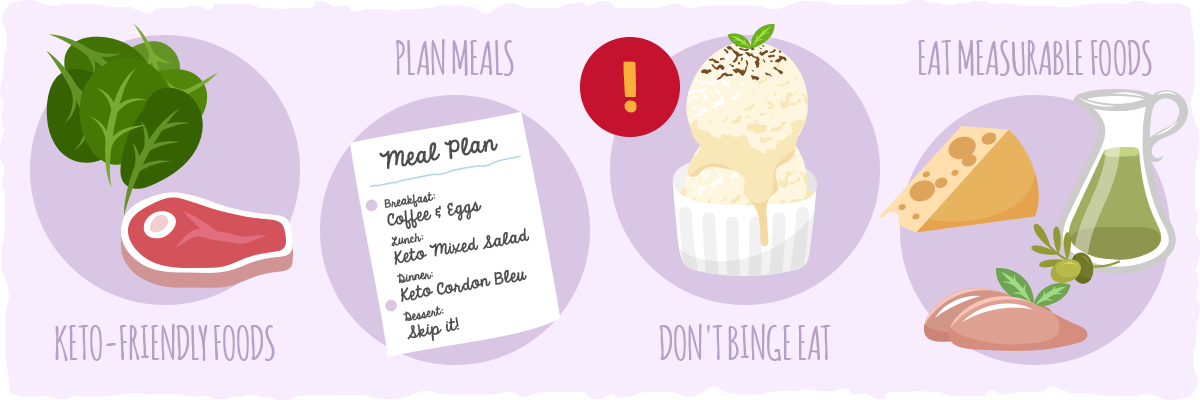
Our current food environment is nothing like what the human race initially evolved to handle. It is easier than ever before to gain weight, and our brains and bodies are not designed to handle our abundant food environment.
We are incessantly bombarded with endless processed food options, food ads, and smells that trigger our desires. As a result, the oldest parts of our brain motivate us to hunt for that food, which we now have a 100% chance of getting — and we don’t have to exert much effort at all to get it.
We will then act out our ancestral programming by eating the most calorie dense foods (i.e., pizza, french fries, cookies, cakes, etc.) and eating much more of those foods than what our body needs to energize itself until the next meal. This results in a vicious cycle of overeating and weight gain with the subconscious intention to prepare us for a famine — a famine that never comes.
To prevent these desires from being triggered and make it easier for you to stick to your diet and lose weight, there are a couple of things you can do:
- Only have keto-friendly food in your house or where you stay. When we are hungry, it suddenly becomes so much easier to convince us to cheat on our diets and our goals. Hunger is a strong motivator, but it is irrational and doesn’t care about your “rules”. For this reason, it is best to plan for the worst. Throw all carb-rich foods in the trash (or hide them in a hard to access place) and make sure the healthiest keto foods are most easily accessible. If you are still struggling with overeating keto foods, then make sure you only have foods that require some preparation and effort before eating. This will make eating much less seductive and you’ll end up eating fewer calories.
- Plan your meals ahead of time. Following a plan is a great way to stay on track and prevent yourself from succumbing to other food temptations. If you are traveling, make sure you have snacks, pre-made meals, and/or keto-friendly options at restaurants you can rely on. If you are at home, make sure you follow a plan that gives you the fats, carb, and proteins you need and nothing more.
- Avoid convenient foods that you can easily binge on. If a food is convenient and tasty, you will be much more inclined to eat more of it. For example, I can eat a ridiculously unhealthy amount of keto ice cream when I know its in the freezer waiting for me. This is why I only make one serving at a time and stick to enjoying that. The thought of making another batch is such a turn off after I finish my normal serving. The same goes for keto baked goods as well. If you find you can eat a lot of something without stopping, you must make it much harder for yourself to consume too much of it.
- Only eat the foods that you measure and track. Don’t stray away from your macronutrient goals too far by adding extra ingredients that you don’t measure. Adding a little extra oil, meat, cheese, etc. to each meal will add up to the point where you end up gaining the weight back.
By using these four strategies, you will eventually make the keto diet into your new lifestyle. Your brain and body will habitually do things that are healthy rather than unhealthy, and you will find it much easier to lose weight than gain weight.
5. Collaborate With Other Keto Dieters
One of the most overlooked diet tips is to use social support to your advantage. When you have people to share your questions, struggles, concerns, and accomplishments with, it will be much easier for you to stay on the diet and get the results you want.
This is why we put together a page full of success stories and an online keto community. The success stories will show you what’s possible and give you a source of inspiration when you are struggling, and the keto community has over 23,000 members that are there to support you on your weight loss journey.
But before you pose any questions to the group, continue reading this article. It will probably clear up any confusion you may still have about keto — especially regarding common keto struggles.

6. Prepare for the Keto Flu and Other Keto Concerns
Going from a diet that doesn’t limit carbs to a ketogenic diet will cause many changes throughout your body that won’t feel too good at first.
The first phenomenon that will occur is a rapid loss of water and minerals like sodium. As a result, many ketoers will experience flu-like symptoms during their first few days of keto dieting. For example, here are some of the symptoms you may experience:
- Sugar cravings
- Dizziness
- Brain fog
- Irritability
- Poor focus and concentration
- Stomach pains
- Nausea
- Cramping
- Confusion
- Muscle soreness
- Insomnia

Luckily, most of these symptoms can be cleared up by drinking plenty of water, supplementing electrolytes (these are our favorite), and consuming mineral rich foods (and mineral supplements if necessary). For more specific recommendations on how to remedy these symptoms, read through our guide to the keto flu.
Troubleshooting Other Health Concerns With Keto
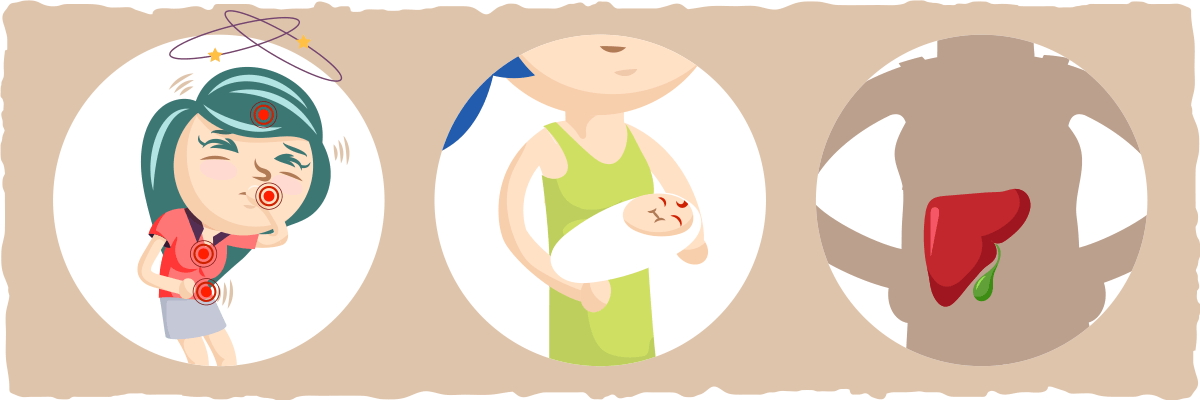
Occasionally, keto dieters may still experience keto flu symptoms after they follow the keto diet for over a week along with implementing the suggestions in the keto flu article. If this sounds like you, then the keto diet may not be the ideal diet for you.
People with familial hypercholesterolemia, hypothyroidism, and/or adrenal issues, for example, usually don’t fare well with ketogenic diets.
People who have familial hypercholesterolemia will struggle with a high-fat diet because one or both of their genes for the LDL receptor are defective, making it difficult for them to regulate their cholesterol levels.
This means that they will tend to have higher LDL levels for more extended periods of time than usual, which increases their risk of heart disease. One way to increase this risk, even more, is by consuming a lot of fat and cholesterol. This is why people with familial hypercholesterolemia should stick to a whole food based, low to moderate fat diet with a healthy amount of exercise and sleep.
(Side note: People who don’t have this condition, on the other hand, are likely to have better overall cholesterol numbers after following the ketogenic diet. For more info on keto and cholesterol, click here.)
People who have hypothyroidism and/or adrenal issues are also likely to struggle with the ketogenic diet. This is because insulin, blood glucose, and glycogen levels help regulate thyroid hormone production and adrenal health.
When insulin levels are low, the conversion of the inactive T4 hormone into the active T3 hormone is impaired, which can lead to hypothyroid symptoms. The adrenals will then secrete epinephrine, norepinephrine, and cortisol to function as pseudo-thyroid hormones (i.e., helping to regulate heart rate, control body temperature, and mobilize energy). On top of that, the drop in T3 hormone levels can also cause cholesterol levels to increase to an unhealthy degree.
If you are already struggling with thyroid or adrenal issues before starting a low carb diet, then it is possible that restricting carbs will make things worse.
To prevent your thyroid from crashing on a low-carbohydrate diet, it is important to consume enough calories from fat, protein, vitamins, and minerals. This will give your body enough fuel so that it can spare its glycogen, maintain thyroid function, and save you from unnecessary stress.
If you are still feeling sluggish and tired after eating plenty of fat and protein, it is best to increase your carbohydrate intake by eating black beans, sweet potatoes, and/or other starchy whole foods until you are having between 100-200 grams of carbs per day.
Keto Diet Adjustments for Other Cases (Pregnancy and Gallbladder Issues)
There are also other groups of people, like those who are pregnant, breastfeeding, or had their gallbladder removed, that can follow the keto diet, but must make some adjustments.
For those who had their gallbladder removed, it is best to follow these suggestions:
- Limit the amount of fat you intake and gradually increase the amount you have per day over a two-week period.
- Take an ox bile supplement (and a lipase supplement if you need some extra help).
- Don’t have too much fat at one sitting.
- If you have digestive issues, then you may need to take the ox bile supplement or eat less fat with your meal next time.
If you are pregnant or breastfeeding, here are some recommendations that will help:
- Eat micronutrient dense foods every day. The most nutrient-rich foods are pasture-raised organ meat, wild-caught sardines, and low-carbohydrate vegetables like spinach, kale, and broccoli. During early pregnancy and prior to conception, foods higher in folate, such as liver and dark leafy greens, are essential. Vitamin D (high in beef liver and sardines), iodine (high in seaweed and raw cheeses), and DHA (high in sardines and fatty fish) are also essential.
- Increase your protein intake. You should aim eat between 1 and 1.2 grams per pound of lean mass throughout pregnancy and breastfeeding. Use our keto calculator and body fat percentage estimation guide to help you figure out the right amount of protein for you.
- Up your carb and fat intake later in pregnancy. Later in the pregnancy and while breastfeeding, add in 30-50g of extra carbs from fruit and dark green vegetables per day to aid milk production. Adding in extra calories from fat (300-500 calories worth) may be helpful as well.
- Consult your healthcare practitioner before making changes. Eating keto while breastfeeding can be potentially dangerous. It is important to always work together with your doctor to ensure the best health for you and your child.
If you have any other worries regarding keto dieting, please consider reading this article. In it, we explore the most common keto related concerns.
What Do You Do If Keto Isn’t For You?
One final thing to consider with this keto tip is that many people, regardless of their current health status, will find that they struggle to stay on the ketogenic diet. In this case, it is best to experiment with different foods and macronutrient ratios until you create a sustainable way of eating that works best for you and gets you the results you want.
For some people, the ketogenic diet will be ideal from a health and lifestyle perspective. For others, a paleo diet or a Mediterranean diet may work better. Don’t just focus on weight loss, focus on creating a healthy lifestyle that you can follow for the rest of your life.
7. Get The Bulk of Your Calories From Homemade Keto Meals
Now that you know why keto works, what keto foods to eat, and what to expect, let’s figure out exactly what you are going to eat.
The best way to find out is by looking at the hundreds of keto recipes that we have on our website.
To see what you can have for breakfast, click here.
For a lunch menu, click here.
Need a keto snack? Check out our snack recipes.
What about keto dinner? Here’s Here are our dinner recipes.
Feel free to have one of our delicious keto sides with your dinner as well.
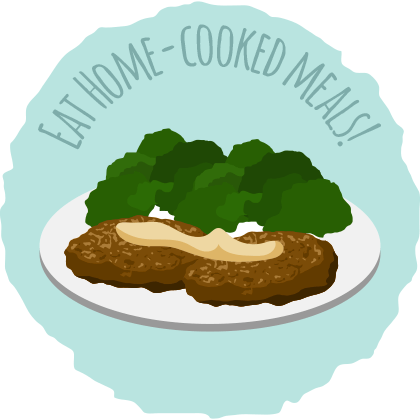
And don’t forget to make your meal even better with some keto-friendly condiments.
To finish off your meal with something sweet, we have plenty of keto desserts as well.
But before you get the ingredients to make these delicious recipes, make sure you implement the next tip in this article.
8. Plan Ahead and Follow a Budget
Many people complain that eating keto is too expensive, but this is simply not true. In fact, it is possible to have a full days worth of keto meals for less than $8 (including breakfast, lunch, dinner, a side dish, and dessert).
We show you how to do this in our shopping list and budget breakdown for one week of keto meals.
However, that estimate was calculated without using all of the strategies that you will find in our article on how to follow keto on a budget. By using these suggestions, you can reduce the cost of your meals to around $1.50 per meal.
Below, you can see a brief overview of how you can cut down the cost of keto:
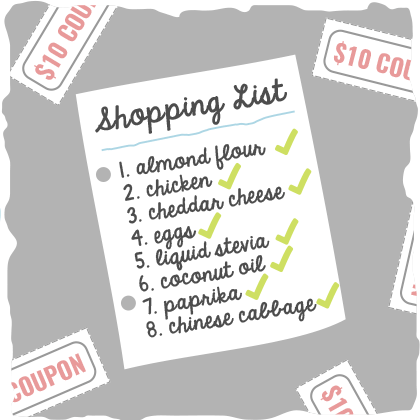
- Use coupons
- Search for deals
- Plan your meals based on the coupons and deals
- Buy in bulk online and in the store
- Make keto recipes that yield leftovers for the week
- Freeze your meats and meals in bulk
- Don’t impulse buy
By using these strategies, you will be able to cut your costs and stay on keto without breaking the bank. In most cases, the keto diet will end up being less expensive than what you were doing before.
9. Don’t Change Your Plan Too Quickly
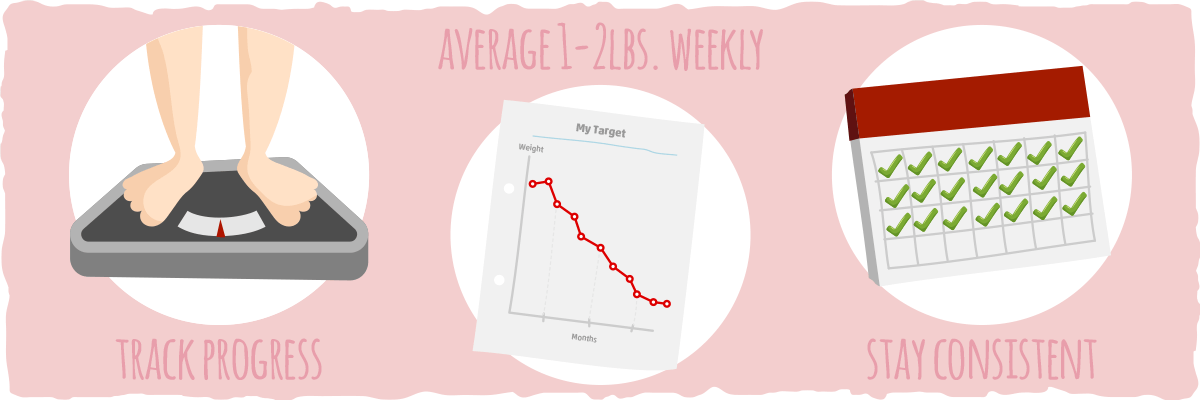
After the first week of keto (which is typically marked by a tremendous amount of water loss), weight loss can be unpredictable. Your calorie needs change depending on the day, and the amount you eat will never be exactly the same any given day either. This will translate to weight loss results that don’t follow a strict pattern.
You might have some weeks where it seems you haven’t lost anything — then you’ll weigh yourself a week or two later and be down 3-4 pounds. The key to long-term weight loss is to stick with your plan, be patient, and don’t get discouraged.
As long as you are losing weight at an average rate of 1-2 pounds per week, keep doing what you’re doing.
If you find that your results have been stalling for over a month, then you will need to make adjustments to your diet and lifestyle so that you can break through your plateau.
Here are some of the strategies that work the best for most people:
- Calculate your macros with an appropriate calorie deficit (aim for a higher deficit if you have more body fat) and track your food intake.
- Recalculate your macronutrient needs every month and follow those instead of your earlier estimates.
- Take breaks from being in a calorie deficit every two weeks.
- Stay consistent with your ketogenic diet by diligently tracking the foods you eat and never cheating.
- Try intermittent fasting. Click here to find out how.
- Implement a fat fast. Find out how by clicking here.
If these strategies aren’t helpful, then you may have a food allergy or sensitivity that is holding you back, or you may be consuming too many hidden sources of carbs and calories (in this case, you should start reading food labels more carefully and track your food consumption with a calorie tracking app).
For a more in-depth look at these weight loss plateau busting strategies and the rationale behind them, check out this article.
10. Use a Meal Plan That Does Most of the Work for You
If you are feeling overwhelmed with all of this info, then following a meal plan may be the best way to simplify the keto diet for you.
Throughout our website, we have plenty of free meal plans for you to try. Take this one for example:
Monday
- Breakfast: 1 serving of Bacon Crusted Frittata Muffins
- Lunch: 1 serving of Spinach Watercress Keto Salad
- Dinner: 1 serving of Bacon Cheeseburger Casserole
- Side Dish: 1 serving of Easy Creamy Cauliflower Mashed Potatoes
- Dessert (optional): Eat as many Coconut Peanut Butter Balls as necessary to meet your needs
Total calories: 1,393 (without dessert)
Total cost for the day: $5.61
Tuesday
- Breakfast: 2 servings of Hunger Buster Low Carb Bacon Frittatas
- Lunch: 1 serving of Bacon Cheeseburger Salad
- Dinner: 1 serving of Salmon Patties with Herbs
- Side Dish: 1 serving of Lemon Roasted Spicy Broccoli
- Dessert (optional): Eat as many Coconut Peanut Butter Balls as necessary to meet your needs
Total calories: 1,312 (without dessert)
Total cost for the day: $6.73
Wednesday
- Breakfast: 1 serving of Bacon Crusted Frittata Muffins
- Lunch: 1 serving of Spinach Watercress Keto Salad
- Dinner: 1 serving of Bacon Cheeseburger Casserole
- Side Dish: 1 serving of Easy Creamy Cauliflower Mashed Potatoes
- Dessert (optional): Eat as many Coconut Peanut Butter Balls as necessary to meet your needs
Total calories: 1,393 (without dessert)
Total cost for the day: $5.61
Thursday
- Breakfast: 1 serving of Hunger Buster Low Carb Bacon Frittatas
- Lunch: 1 serving of Bacon Cheeseburger Salad
- Dinner: 1 serving of Salmon Patties with Herbs
- Side Dish: 1 serving of Lemon Roasted Spicy Broccoli
- Dessert: 1 Churro Mug Cake
Total calories: 1,510 (with dessert)
Total cost for the day: $7.37
Friday
- Breakfast: 1 serving of Bacon Crusted Frittata Muffins
- Lunch: 1 serving of Spinach Watercress Keto Salad
- Dinner: 1 serving of Bacon Cheeseburger Casserole
- Side Dish: 1 serving of Easy Creamy Cauliflower Mashed Potatoes
- Dessert (optional): Eat as many Coconut Peanut Butter Balls as necessary to meet your needs
Total calories: 1,393 (without dessert)
Total cost for the day: $5.61
Saturday
- Breakfast: 2 servings of Hunger Buster Low Carb Bacon Frittatas
- Lunch: 1 serving of Bacon Cheeseburger Salad
- Dinner: 1 serving of Salmon Patties with Herbs
- Side Dish: 1 serving of Lemon Roasted Spicy Broccoli
- Dessert (optional): Eat as many Coconut Peanut Butter Balls as necessary to meet your needs
Total calories: 1,312 (without dessert)
Total cost for the day: $6.73
Sunday
- Breakfast: 1 serving of Bacon Crusted Frittata Muffins
- Lunch: 1 serving of Spinach Watercress Keto Salad
- Dinner: 1 serving of Bacon Cheeseburger Casserole
- Side Dish: 1 serving of Lemon Roasted Spicy Broccoli
- Dessert (optional): Eat as many Coconut Peanut Butter Balls as necessary to meet your needs
Total calories: 1,287 (without dessert)
Total cost for the day: $5.29
This meal plan is taken from a free article that includes a shopping list, budget breakdown, and other helpful tips. If you want to see all of the info, click here.
If you have specific dietary restrictions, we have sample meal plans for you as well:
- For a sample vegetarian meal plan, check out our vegetarian keto guide.
- For a sample vegan meal plan, check out our vegan keto guide.
- If you’d like to keep it dairy-free, check out our dairy-free keto guide.
On the other hand, if you’d rather invest in a longer meal plan, you can:
- Download our 14-day ketogenic diet meal plan.
- Join our Keto Academy to get multiple meal plans, shopping lists, and expert guidance that makes adapting to keto as simple and easy as possible.
Putting It All Together — How To Guarantee Success on Your Diet
One of the most important things about dieting is to understand what to focus on for the best results.
In general, if you are trying to lose weight, you should focus on creating a healthy lifestyle that allows you to maintain a calorie deficit. One of the best ways to do this is by following a keto diet because:
- Eating low carb forces you to eat more satiating foods. Over time, this will cause you to eat much fewer calories because you are less hungry.
- Cutting out high carb foods keeps the most palatable foods out of the diet, making it much easier to eat fewer calories.
Altogether, this explains why low carb and ketogenic diets are so effective at helping people maintain a calorie deficit and lose weight without having to struggle at all.
Now that you know what to focus on when it comes to weight loss, you are ready to use these keto diet success tips to your advantage:
- Stick to keto foods
- Calculate your macros, meet your macros with keto meals, and track your food intake.
- Join our online keto community to collaborate with over 20,000 other keto dieters.
- Make sure you are prepared to remedy the keto flu and to deal with other potential keto concerns that may come up.
- Change your food environment to make it easier to stay on the ketogenic diet than it is to cheat.
- Use shopping lists, meal plans, and budgeting tips to follow keto without breaking the bank.
- Know when to adjust your dietary strategy for better results and when to stick to your current plan.
And if the thought of doing all of these things is overwhelming:
- Consider joining our Keto Academy to get multiple meal plans, shopping lists, and expert guidance to make following the ketogenic diet as simple as possible.
Sources:
- Evaluating Calorie Intake — Data Science Campus
- Comparison between Human and Bite-Based Methods of Estimating Caloric Intake. — NCBI
- Social support: A necessity for weight loss — The Mayo Clinic Diet
- Low-fat vs low-carb? Major study concludes: it doesn’t matter for weight loss — Examine
- Effect of Low-Fat vs Low-Carbohydrate Diet on 12-Month Weight Loss in Overweight Adults and the Association With Genotype Pattern or Insulin Secretion The DIETFITS Randomized Clinical Trial — The JAMA Network
- Keto & Weight Loss — ruled.me
- Obesity and overweight — World Health Organization
- Overweight & Obesity Statistics — National Institutes of Health
- The Hungry Brain — STEPHAN J GUYENET, PhD
- Obesity Energetics: Body Weight Regulation and the Effects of Diet Composition. — NCBI
- Effects of low-carbohydrate vs low-fat diets on weight loss and cardiovascular risk factors: a meta-analysis of randomized controlled trials — NCBI Bookshelf
- Very-low-carbohydrate ketogenic diet v. low-fat diet for long-term weight loss: a meta-analysis of randomised controlled trials — British Journal of Nutrition
- Very-low-carbohydrate diets and preservation of muscle mass — NCBI
- International society of sports nutrition position stand: diets and body composition — Journal of the International Society of Sports Nutrition
- Setting the Deficit – Small, Moderate or Large — Body Recomposition
- What is the Required Energy Deficit per unit Weight Loss? — NCBI
- The Association Between Rate of Initial Weight Loss and Long-Term Success in Obesity Treatment: Does Slow and Steady Win the Race? — Springer Link
- Intermittent energy restriction improves weight loss efficiency in obese men: the MATADOR study — International Journal of Obesity
- Effect of 6-month calorie restriction on biomarkers of longevity, metabolic adaptation, and oxidative stress in overweight individuals: a randomized controlled trial. — NCBI
- Adaptive reduction in basal metabolic rate in response to food deprivation in humans: a role for feedback signals from fat stores. — NCBI
- Adaptive thermogenesis in humans — International Journal of Obesity